INSTITUT SUPERIEUR D'ANTHROPOLOGIE
INSTITUTE OF ANTHROPOLOGY
ONLINE COURSES / COURS A DISTANCE
FALL TERM : OCTOBER 2015
REGISTER NOW
TURQUIE – 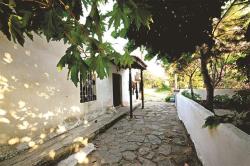 Gökçeada - A 250-meter-long road built upon the order of a Greek emperor for his wife in the 1400s has been reopened after a series of restoration works on Imbros Island (Gökçeada in Turkish) in the Aegean province of Çanakkale. This road was built upon the order of the then-emperor, Palamede Gattilusio, for his wife Queen Valentina in around 1440. Queen Valentina always used this road while going to the beach from her house. The road is of great importance for the history of our island, but it was buried for years due to rainfalls and other reasons. The road has been unearthed and renovated by the municipality
Gökçeada - A 250-meter-long road built upon the order of a Greek emperor for his wife in the 1400s has been reopened after a series of restoration works on Imbros Island (Gökçeada in Turkish) in the Aegean province of Çanakkale. This road was built upon the order of the then-emperor, Palamede Gattilusio, for his wife Queen Valentina in around 1440. Queen Valentina always used this road while going to the beach from her house. The road is of great importance for the history of our island, but it was buried for years due to rainfalls and other reasons. The road has been unearthed and renovated by the municipality
http://www.hurriyetdailynews.com/queen-valentina-road-reopens-after-six-centuries-in-northern-turkey-.aspx?pageID=238&nid=86003
ROYAUME UNI – 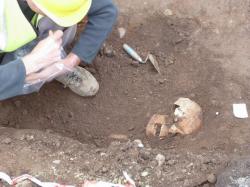 Aberdeen - A mass grave with more than 20 medieval skeletons has been hailed a “major discovery”. The remains, thought to date back to the 13th century, were discovered during installation works at a top private school in Scotland. The bones were buried less than two feet underground in the quad area of the site and are now being examined by experts with a view to being reburied. It is believed the skeletons are of people laid to rest on the site of the former Blackfriars Abbey during the 13th century. The abbey was founded between 1230 and 1249, purportedly by Alexander II, but was destroyed by reformers in 1560.
Aberdeen - A mass grave with more than 20 medieval skeletons has been hailed a “major discovery”. The remains, thought to date back to the 13th century, were discovered during installation works at a top private school in Scotland. The bones were buried less than two feet underground in the quad area of the site and are now being examined by experts with a view to being reburied. It is believed the skeletons are of people laid to rest on the site of the former Blackfriars Abbey during the 13th century. The abbey was founded between 1230 and 1249, purportedly by Alexander II, but was destroyed by reformers in 1560.
http://www.scotsman.com/news/mass-medieval-grave-found-at-aberdeen-school-1-3841849
ROYAUME UNI – 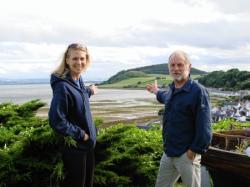 Ormond Hill - Plans are afoot to excavate the ancient stronghold site of the man who was the Black Isle’s "Braveheart". Andrew de Moray, a brother in arms with William Wallace, is a little-known hero of the Scottish Wars of Independence. The Highlander raised the flag at his castle at Ormond Hill, near Avoch, to mark the start of a rebellion against the English occupation north of the border by Edward I, known as "Longshanks". De Moray stood with Wallace at Stirling Bridge in 1297 and is widely credited with masterminding that battle. But while Stirling Bridge was a resounding victory for the Scots, it cost Andrew de Moray his life. While William Wallace has been immortalised in print, monument and film, De Moray has largely slipped out of history. Now, however, local people hope to shed more light on the freedom fighter’s stronghold at Avoch by testing enthusiasm for a comunity-backed archaeological dig.
Ormond Hill - Plans are afoot to excavate the ancient stronghold site of the man who was the Black Isle’s "Braveheart". Andrew de Moray, a brother in arms with William Wallace, is a little-known hero of the Scottish Wars of Independence. The Highlander raised the flag at his castle at Ormond Hill, near Avoch, to mark the start of a rebellion against the English occupation north of the border by Edward I, known as "Longshanks". De Moray stood with Wallace at Stirling Bridge in 1297 and is widely credited with masterminding that battle. But while Stirling Bridge was a resounding victory for the Scots, it cost Andrew de Moray his life. While William Wallace has been immortalised in print, monument and film, De Moray has largely slipped out of history. Now, however, local people hope to shed more light on the freedom fighter’s stronghold at Avoch by testing enthusiasm for a comunity-backed archaeological dig.
http://www.north-star-news.co.uk/News/Plan-to-dig-at-Black-Isle-Braveheart-stronghold-27072015.htm
USA – 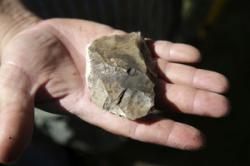 Buttermilk Creek - In a grassy meadow where eons ago some of America’s first settlers camped and chipped stone tools, a precisely dug dirt pit, 4 yards square, is sinking steadily into the dark soil. And as it descends at a rate of an inch or two a day, the remote excavation also is traveling backward through the millennia toward the continent’s first native people. If all goes well, perhaps quite soon, primitive stone tools, similar to those discovered here a few years ago, will again be unearthed, reinforcing an emerging, if once controversialtheory, about when the first humans arrived in the Americas. The artifacts found here and at other distant sites appear to push back the arrival date by several thousand years. “The objective now is to go back and see if we can learn more about the early people. The more we dig and the more we see, it’s becoming very clear that this material was in place below the Clovis material,” said Michael Waters, an anthropology professor at Texas A&M who is overseeing the excavation. “Some anthropologists believe people were here 25,000 to 39,000 years ago, and they would say I haven’t gone back far enough. Then there’s a group that believes Clovis was first, and that I’ve gone back too far,” he said. But, he said, the oldest stone tools and blades found here will likely help scientists better understand the Clovis period that followed.
Buttermilk Creek - In a grassy meadow where eons ago some of America’s first settlers camped and chipped stone tools, a precisely dug dirt pit, 4 yards square, is sinking steadily into the dark soil. And as it descends at a rate of an inch or two a day, the remote excavation also is traveling backward through the millennia toward the continent’s first native people. If all goes well, perhaps quite soon, primitive stone tools, similar to those discovered here a few years ago, will again be unearthed, reinforcing an emerging, if once controversialtheory, about when the first humans arrived in the Americas. The artifacts found here and at other distant sites appear to push back the arrival date by several thousand years. “The objective now is to go back and see if we can learn more about the early people. The more we dig and the more we see, it’s becoming very clear that this material was in place below the Clovis material,” said Michael Waters, an anthropology professor at Texas A&M who is overseeing the excavation. “Some anthropologists believe people were here 25,000 to 39,000 years ago, and they would say I haven’t gone back far enough. Then there’s a group that believes Clovis was first, and that I’ve gone back too far,” he said. But, he said, the oldest stone tools and blades found here will likely help scientists better understand the Clovis period that followed.
http://kdhnews.com/living/digging-into-history/article_8cc78a3e-3350-11e5-a9d8-2f42386bc828.html
USA – 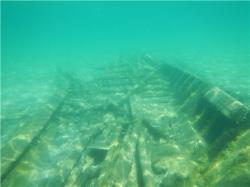 Northport - A piece of history was discovered in the calm waters of Northport Harbor. Archaeologists say they discovered two shipwrecks and the substantial remains of a historic pier under the water in Leelanau County. Archaeologists say the shipwrecks are believed to be the remains of the “Eagle” and the “Flora”. The boats were small commercial fishing tugs that used to ply the waters of Grand Traverse Bay. Using the advanced equipment and scuba equipment, the field-school students have been studying and mapping the remnants under the water of Lake Michigan.
Northport - A piece of history was discovered in the calm waters of Northport Harbor. Archaeologists say they discovered two shipwrecks and the substantial remains of a historic pier under the water in Leelanau County. Archaeologists say the shipwrecks are believed to be the remains of the “Eagle” and the “Flora”. The boats were small commercial fishing tugs that used to ply the waters of Grand Traverse Bay. Using the advanced equipment and scuba equipment, the field-school students have been studying and mapping the remnants under the water of Lake Michigan.
http://www.upnorthlive.com/news/story.aspx?id=1235277#.VbZeqt-c08o
USA – 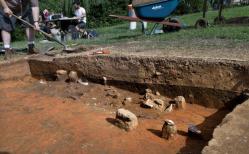 Salem - Almost 250 years ago, in frigid February weather, eight craftsmen made the trek from settlements at Bethania and Bethabara to what would soon be known as Salem. Along the way they shot two deer and, seeking sanctuary at the Builder’s House — the first building erected in Salem —cooked it over the roaring indoor fireplace. Although the Builder’s House was a modest log cabin, it symbolized something much greater: the genesis of Winston-Salem as we know it, said Mo Hartley, the director of archaeology at Old Salem. Hartley is overseeing an excavation at the Builder’s House — built in January 1766 — to learn more about the early days of the settlers who built the Piedmont and the house where it all started. According to Moravian diaries, the house — which was approximately 26 feet by 22 feet — was completed Feb. 19, 1766. Workmen immediately moved in to continue building Salem, which was intended to be the central town of the 100,000-acre Wachovia land tract. After the first homes were established, the workers moved out and the building was converted into a farmhouse. Crops for the town were grown on the adjacent land. The building became a pottery shop in 1834 and stood until 1907, when it was dismantled. The summer excavation has revealed that the fireplace stood in the center of the back wall of the house and was 7 feet long, with the depth yet to be determined, he said. A dark outline, the footprint of the fireplace, can be seen where Hughes and his crew have dug down. But much about the fireplace is still unknown, Hartley said. Hartley said they assume the fireplace was made of brick because of the clusters of brick they have found, coupled with Moravian records of wagonloads of brick being brought to Salem in early 1766.
Salem - Almost 250 years ago, in frigid February weather, eight craftsmen made the trek from settlements at Bethania and Bethabara to what would soon be known as Salem. Along the way they shot two deer and, seeking sanctuary at the Builder’s House — the first building erected in Salem —cooked it over the roaring indoor fireplace. Although the Builder’s House was a modest log cabin, it symbolized something much greater: the genesis of Winston-Salem as we know it, said Mo Hartley, the director of archaeology at Old Salem. Hartley is overseeing an excavation at the Builder’s House — built in January 1766 — to learn more about the early days of the settlers who built the Piedmont and the house where it all started. According to Moravian diaries, the house — which was approximately 26 feet by 22 feet — was completed Feb. 19, 1766. Workmen immediately moved in to continue building Salem, which was intended to be the central town of the 100,000-acre Wachovia land tract. After the first homes were established, the workers moved out and the building was converted into a farmhouse. Crops for the town were grown on the adjacent land. The building became a pottery shop in 1834 and stood until 1907, when it was dismantled. The summer excavation has revealed that the fireplace stood in the center of the back wall of the house and was 7 feet long, with the depth yet to be determined, he said. A dark outline, the footprint of the fireplace, can be seen where Hughes and his crew have dug down. But much about the fireplace is still unknown, Hartley said. Hartley said they assume the fireplace was made of brick because of the clusters of brick they have found, coupled with Moravian records of wagonloads of brick being brought to Salem in early 1766.
http://www.journalnow.com/news/local/archeological-dig-at-old-salem-uncovers-first-building-erected-in/article_5e4b7baf-d0ef-5421-9175-070e61cb210a.html
INDE – 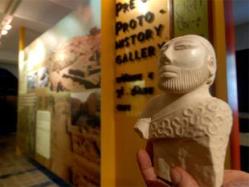 - Early Harappan and historical, Chalcolithic, Buddhist and Gupta remains have been found during the recent excavation works carried out in various parts of the country, the government told the Lok Sabha today. In a reply to a question, Minister of State for Culture Mahesh Sharma said that the archaeological excavation conducted at Kayar in Yavatmal district at Maharashtra in 2014-15. Excavations at the site indicates that the site, being a multicultural nature with fortification, was flourishing during the period especially from the Proto-historic to the Early Historical period, he said. Sharma said, two cultural assemblage were found during the excavation in Binjore of Shri Ganga Nagar district in Rajasthan during the last fiscal. Early-Harappan and mature-Harappan represented by various antiquities such as fish-hook, arrowheads, knife, celt, bangles, terracotta bangles, faience bangles, shell bangles, beads of carnelian, agate, faience, gold foil and ring, terracotta toy and frame, cake mustika and bull figurine. In Rukministhan of Nalanda at Bihar, the mound revealed several structures like votive stupas, brick walls, steps to the north of the temple containing colossal image of Buddha and rammed floors, the minister said. "These structures as per their nature and associated antiquities and potteries are ranging from Gupta to Pala period," Sharma said referring to excavations in Nalanda. As far as excavations in Suabarei in Odisha are concerned he said that the excavation has proved that it was an important Neo-Chacolithic site in between Daya River and Gangua rivulet. A single shark tooth found from the excavation suggests some sort of probable sea link, he added. On the other hand, excavations in Vadnagar in Gujarat, he said, the earliest deposit of the sites goes back the first and second century BCE at Baba-no Tekdo locality as more than 300 coins of various metals and alloys such as copper, lead, potin, billon of different periods have been found during the course of excavation. During an excavation in Keeladi of Madurai district, the Minister said that the site has revealed early historic remains (third BCE - third CE) in the form of brick structures and also evinced interesting finds like Rouletted and Arretine pot sherds suggesting trade contacts maintained by this settlement with western world.
- Early Harappan and historical, Chalcolithic, Buddhist and Gupta remains have been found during the recent excavation works carried out in various parts of the country, the government told the Lok Sabha today. In a reply to a question, Minister of State for Culture Mahesh Sharma said that the archaeological excavation conducted at Kayar in Yavatmal district at Maharashtra in 2014-15. Excavations at the site indicates that the site, being a multicultural nature with fortification, was flourishing during the period especially from the Proto-historic to the Early Historical period, he said. Sharma said, two cultural assemblage were found during the excavation in Binjore of Shri Ganga Nagar district in Rajasthan during the last fiscal. Early-Harappan and mature-Harappan represented by various antiquities such as fish-hook, arrowheads, knife, celt, bangles, terracotta bangles, faience bangles, shell bangles, beads of carnelian, agate, faience, gold foil and ring, terracotta toy and frame, cake mustika and bull figurine. In Rukministhan of Nalanda at Bihar, the mound revealed several structures like votive stupas, brick walls, steps to the north of the temple containing colossal image of Buddha and rammed floors, the minister said. "These structures as per their nature and associated antiquities and potteries are ranging from Gupta to Pala period," Sharma said referring to excavations in Nalanda. As far as excavations in Suabarei in Odisha are concerned he said that the excavation has proved that it was an important Neo-Chacolithic site in between Daya River and Gangua rivulet. A single shark tooth found from the excavation suggests some sort of probable sea link, he added. On the other hand, excavations in Vadnagar in Gujarat, he said, the earliest deposit of the sites goes back the first and second century BCE at Baba-no Tekdo locality as more than 300 coins of various metals and alloys such as copper, lead, potin, billon of different periods have been found during the course of excavation. During an excavation in Keeladi of Madurai district, the Minister said that the site has revealed early historic remains (third BCE - third CE) in the form of brick structures and also evinced interesting finds like Rouletted and Arretine pot sherds suggesting trade contacts maintained by this settlement with western world.
http://economictimes.indiatimes.com/news/politics-and-nation/early-harappan-chalcolithic-buddhist-and-gupta-remains-found-in-counrty-wide-excavation-works/articleshow/48241036.cms?